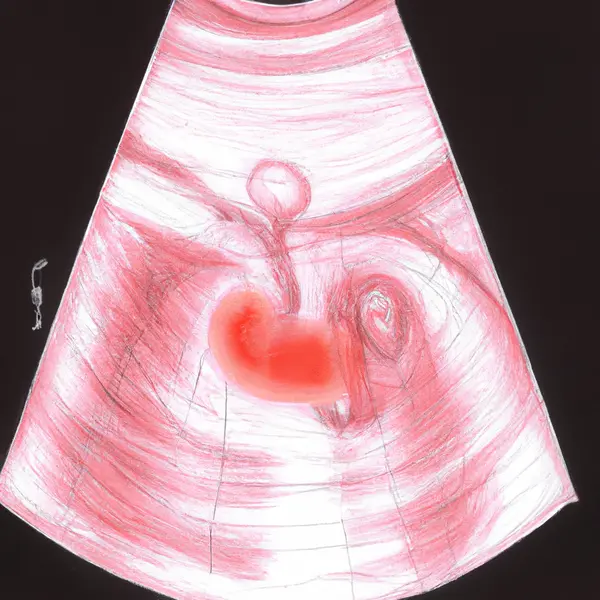Expecting women may experience a wide range of emotions as their due date approaches. Expectant moms typically experience a range of emotions at this stage, from excitement to worry as they anticipate the moment they can finally hold their newborn.
Listen solely to happy birth stories for the time being. Think about how you’d like your labor and delivery to go. A few weeks until the big day, and you may use relaxation, meditation, and positive affirmations to get yourself ready. The importance of preparing your body, mind, and soul for birth cannot be overstated.
What happens inside the maternal body in the 32 week of pregnancy?
Your doctor should be able to feel the fundus (the upper edge of the uterus) at around 5.5 inches above the navel, and your baby bump should be quite noticeable. The ligaments and joints in your pelvis (responsible for mild to severe lower back pain and nausea) are feeling the full force of your pregnant hormones. This is because the hormones try to relax the pelvic ligaments to make a normal vaginal birth more likely. On the other hand, excessive laxity of the pelvic joints can hinder movement and cause discomfort, limiting a person’s ability to move around and engage in physical activity.
What changes are occurring inside your developing baby?
At 32 weeks, your baby is now rather large, and she will be ready to be born within the next few weeks. She’ll measure in at around 18 inches tall and weigh about 4 pounds. In addition to being affected by one’s genetic makeup and the environment, one’s height and weight are imprecise measures.
The fetal characteristics typical of a 32-week-old pregnancy are:
- Five senses refined to perfection.
- Skin thickens with time, making it more durable and resistant to the elements.
- Your baby’s skin is still wrinkled, but the fatty deposits that will be made over the next several weeks will smooth everything out.
What are the signs and symptoms of the 32 week of pregnancy?
Regular, intense contractions of the uterus and kicking from the fetus are to be expected. In many pregnancies, this is the period when the baby flips over to lie on its back (vertex position). Feelings like this can be distressing and frightening, but there are easy ways to alleviate them. Try sleeping on your left side, swaying back and forth on your hands and knees (pelvic rocking), or sipping some water. In addition, some women report feeling better after urinating. Additional traditional symptoms include:
- Since your abdominal skin, thighs, and breasts undergo such dramatic remodeling and enlargement (stretching of the skin), these areas are particularly vulnerable to the development of stretch marks during pregnancy.
- The itching surrounding these stretch marks may get worse, but moisturizing lotion and drinking water can help a lot.
- Walking is difficult because of shortness of breath, back pain, and fatigue.
- The bleeding, pain, and swelling associated with hemorrhoids can be quite unpleasant. In order to reduce the likelihood of additional difficulties, a high fiber intake should be maintained.
What cautions you must take?
Many pregnant women report feeling dizzy or faint in their latter weeks of pregnancy, which might increase their risk of injury from falling. This symptom results from the pathophysiology of a reservoir of blood being formed in the deep veins of the legs. It’s important to get enough of rest and to avoid prolonged periods of standing. Also, until you give birth, stay away from heels and other unpleasant footwear.
Tests performed during this week:
If your baby isn’t in a vertex position (head down) by 32 weeks, your doctor will check by palpation. Babies are usually still tiny enough to be massaged into the ideal position for delivery.
Certain issues are more common in moms who have poorly managed gestational hypertension, mostly because your pregnancy-related plasma volume increases almost 1.5 times by 32 weeks of pregnancy as compared to non-pregnant condition. Pre-eclampsia is one such problem, and it manifests itself with extreme swelling of the face, hands, ankles, and feet. Pre-eclampsia also causes other symptoms, such as:
- Major head pain.
- Proteins detectable in the urine.
- Gaining weight.
- Alterations in vision (caused by untreated hypertension).
Keeping blood pressure under control is crucial for managing these symptoms. In the most dire of circumstances, it may be necessary to attempt a cesarean section or immediate labor in order to preserve the mother’s life.
The woman may have seizure activity, known as eclampsia, or HELLP syndrome, in which the liver’s ability to function normally is significantly damaged.
Things to think about:
While there may not be much you can do during pregnancy to prevent the emergence of stretch marks, you may take steps to feed your skin and encourage the healthy remodeling of its surface layers. Lotions containing cocoa butter, vitamin E, aloe vera, and similar components are recommended by professionals. Possible skin stretching due to rapid maternal weight increase in the latter weeks of pregnancy. You should reduce your calorie consumption and drink more water to prevent weight gain. Stretch marks are less likely to appear and are more likely to fade to a silvery white if you use these treatments during your pregnancy (and after giving delivery).
